Contents
Yellowstone Lake and Surrounding Area | Introduction
Yellowstone Lake, situated in the heart of Yellowstone National Park, is the largest high-altitude lake in North America. Its expansive waters stretch quietly to the horizon, shifting in color from blue to deep green with the changing sunlight and weather. Along this magnificent lakeshore, geothermal activity bubbles beneath the surface. The most famous geothermal area here is West Thumb Geyser Basin. Unlike the intense and frequent eruptions seen in other areas like Old Faithful, the geothermal features near Yellowstone Lake have a more tranquil quality. Steam wafts gently by the lakeside, and the clear, deep waters of the hot springs radiate a greenish-blue glow, appearing as natural extensions of the lake itself.
Following the main road through Yellowstone National Park, visitors can head north from the lake to the nearby Mud Volcano area, perfect for a day trip. Mud Volcano offers a dramatic contrast to the calmness of Yellowstone Lake, with boiling mud pools and a strong sulfur smell that create a more intense geothermal landscape.
Yellowstone Lake and Surrounding Area | One-Day Itinerary
The one-day itinerary can be adjusted to go from north to south or vice versa. Starting from the south entrance as an example, head north along the lake, exploring the scenic terrain and winding shoreline. Along the way, visit Grant Village, West Thumb Geyser Basin, the lakeside hotels, Mud Volcano, and Sulphur Caldron. After taking in these geothermal wonders, head to Hayden Valley in the evening to end the day with herds of bison.
- Hotel search: Agoda
- Activities & tickets: KKday / Klook / TripAdvisor
- Travel credit cards (US only): My card picks + beginner tips
Yellowstone Lake and surrounding area | Accommodations
If you plan to explore Yellowstone Lake and the surrounding attractions in depth, choosing lakeside lodging or lodging close to the lake will make your trip smoother and save you time on traveling to and from the lake. For travelers in different directions, the following lodging options are available.
Lake Yellowstone Hotel & Cabins
Located on the northwest shore of Yellowstone Lake, the Lake Yellowstone Hotel is a classic lakeside accommodation. This elegant, century-old hotel offers visitors a stunning view of the lake and surrounding mountains from its windows. The decor retains a timeless American style, and the hotel has undergone numerous renovations to preserve its original charm. Lake-view rooms are very popular, so booking several months in advance is recommended, especially during peak summer season.
Even if you’re not staying overnight, consider visiting for a meal. The restaurant serves traditional American cuisine, and the large windows provide a relaxed dining atmosphere with a view of the lake. Note that the restaurant can get very crowded during peak season, so expect long wait times for a table.
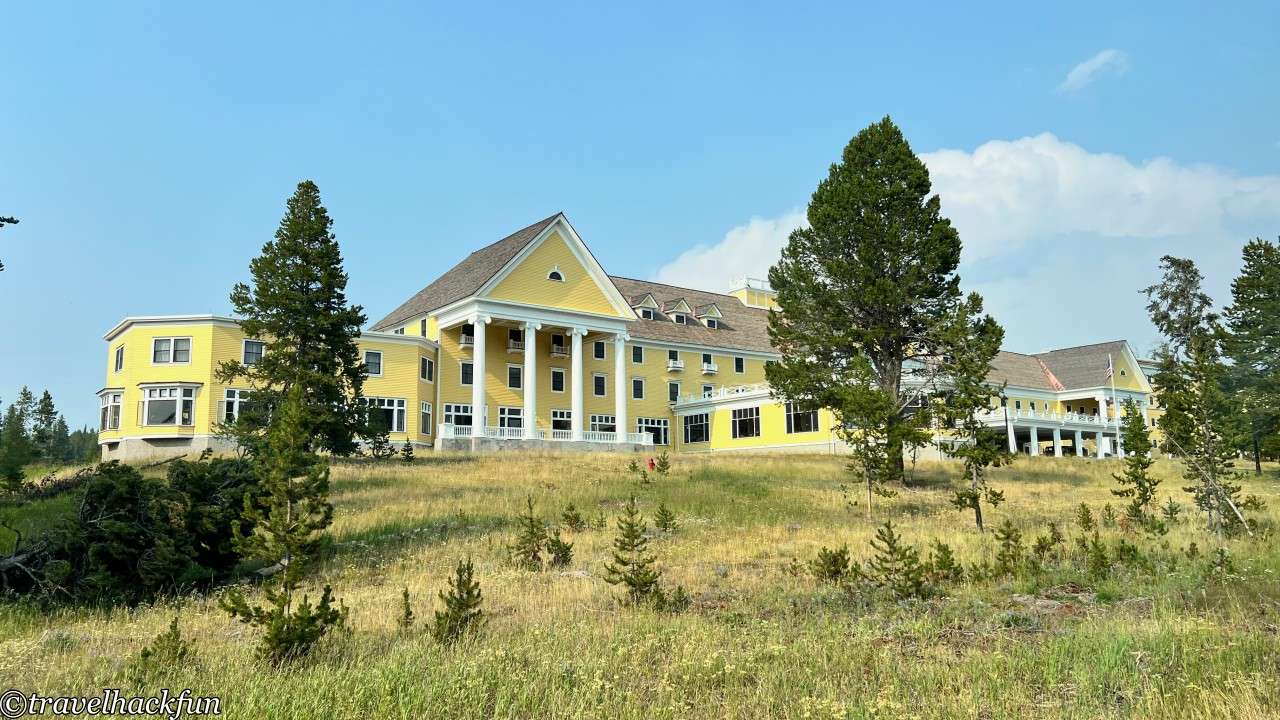


Recommended accommodation: Compare prices for Lake Yellowstone Hotel?
Grant Village Lodge
Close to the south entrance, Grant Village Lodge is a relatively modern and affordable option, just a few minutes' drive from Yellowstone Lake. The village includes two restaurants and a coffee shop, ideal for dinner and relaxation after a day of sightseeing. While not as luxurious as the Lake Yellowstone Hotel, the rooms are comfortable, and the location is convenient for travelers starting from or ending the day at the south end.
Canyon Lodge & Cabins
Canyon Lodge & Cabins is located in the northern Canyon Village area of Yellowstone, close to the spectacular Yellowstone Grand Canyon. Although a bit further from the lake, it’s still within a reasonable driving distance, making it a good option for those planning a day trip to the lake. This more modern lodge provides comfortable accommodations, along with dining facilities, a coffee shop, and a convenience store.
Yellowstone Lake and Surrounding Area | Attractions
Grant Village Visitor Center
Entering Yellowstone from the south, the Grant Village Visitor Center is an excellent first stop. This visitor center features displays on the lake's ecosystem, geothermal activity, and wildlife. The Yellowstone River flows just behind the center, making it a great place to learn about the lake area before setting out.

Must See | West Thumb Geyser Basin
After a brief stop at Grant Village, drive to West Thumb Geyser Basin along the lakeshore. This unique geothermal area is located on the western edge of Yellowstone Lake, where steam rises from hot springs at the water's edge, creating a misty, dreamlike scene.
The boardwalk at West Thumb Geyser Basin is about 0.6 miles long, making it an easy and scenic walk.




The most famous feature here is Fishing Cone, a hot spring located right by the lake. Legend has it that early visitors would catch fish here and cook them directly in the hot spring, giving the feature its playful name.
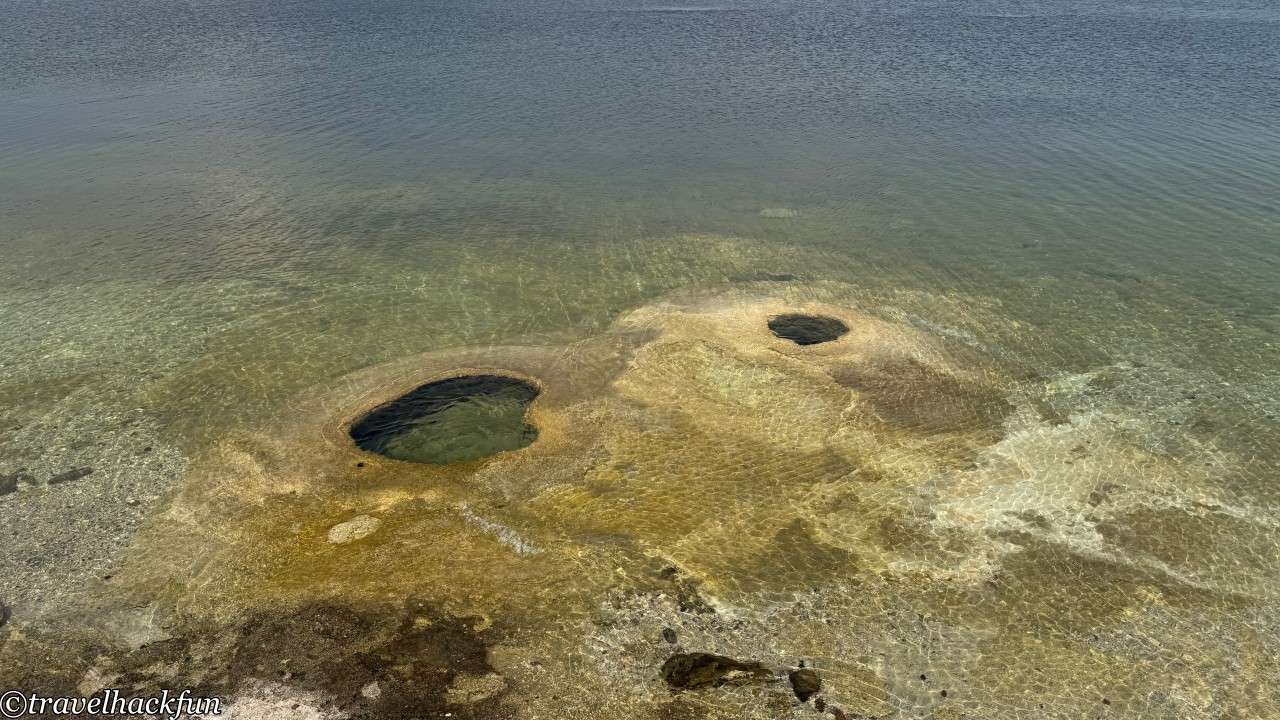
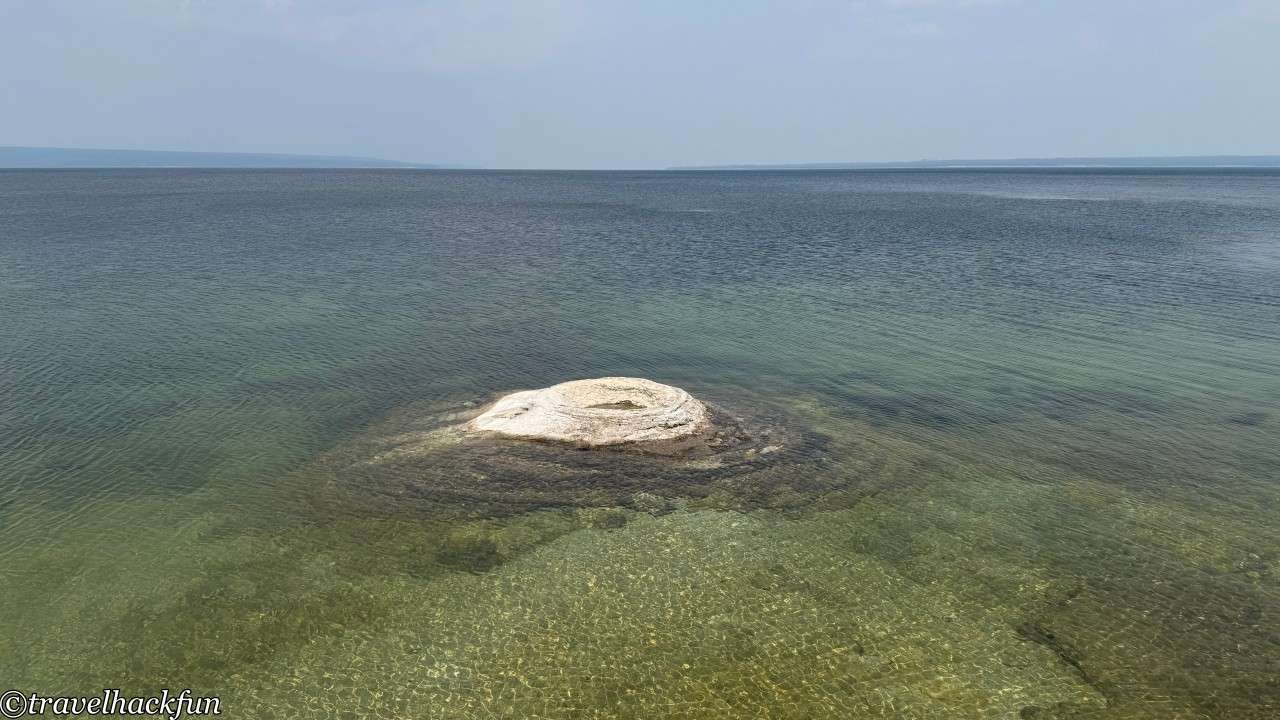
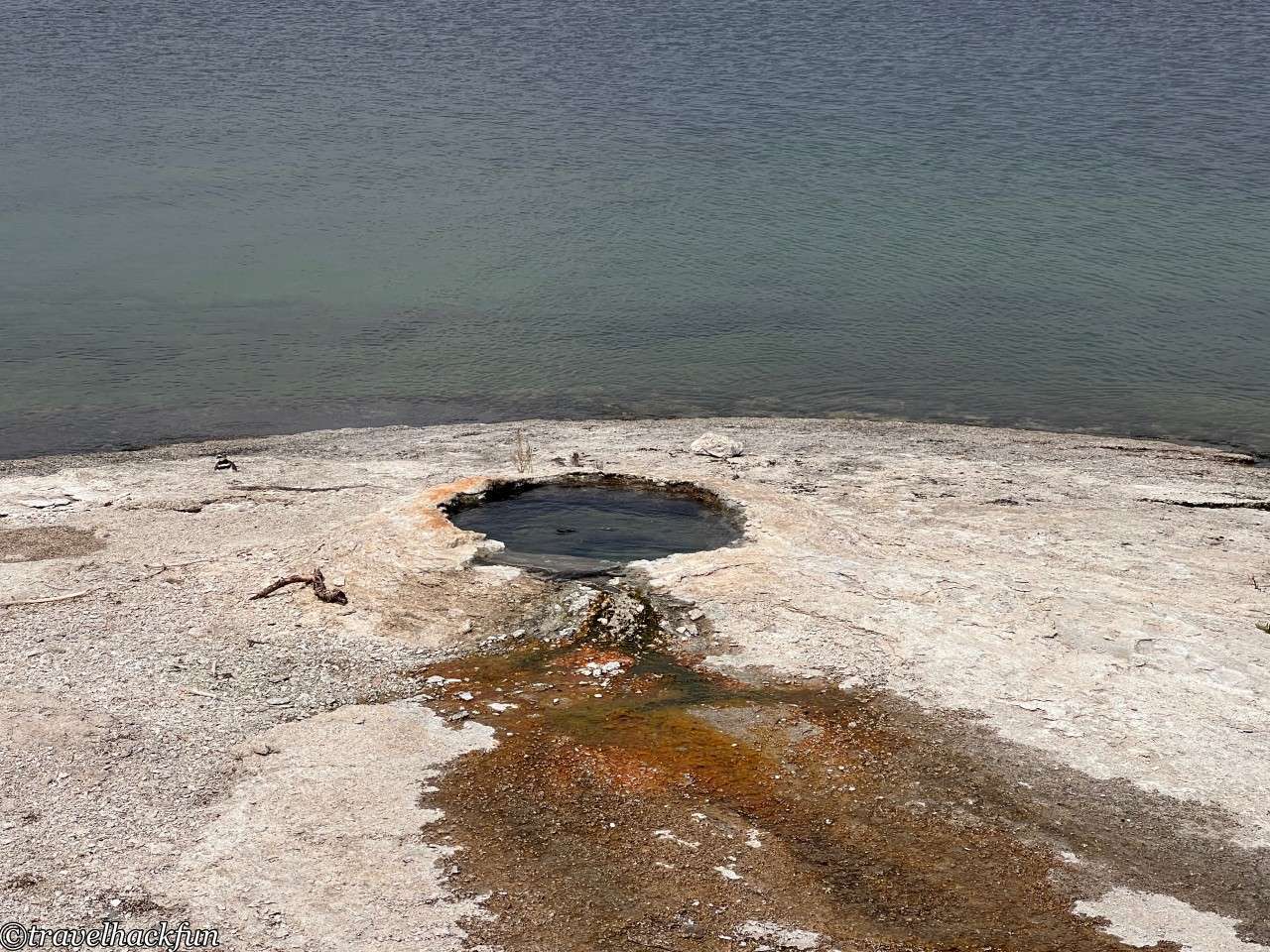

The boardwalk is roughly circular and covers the main geysers, hot springs, and fumaroles in the area. A leisurely walk takes around 30 to 45 minutes. Be sure to check out Abyss Pool and Black Pool, two springs with striking colors. Abyss Pool’s deep blue seems to lead directly to the lakebed, while Black Pool shifts between deep blue and green with the changing light. Walking along the lakeside boardwalk, the serene beauty of Yellowstone Lake contrasts with the excitement of the geothermal features, creating a unique landscape.
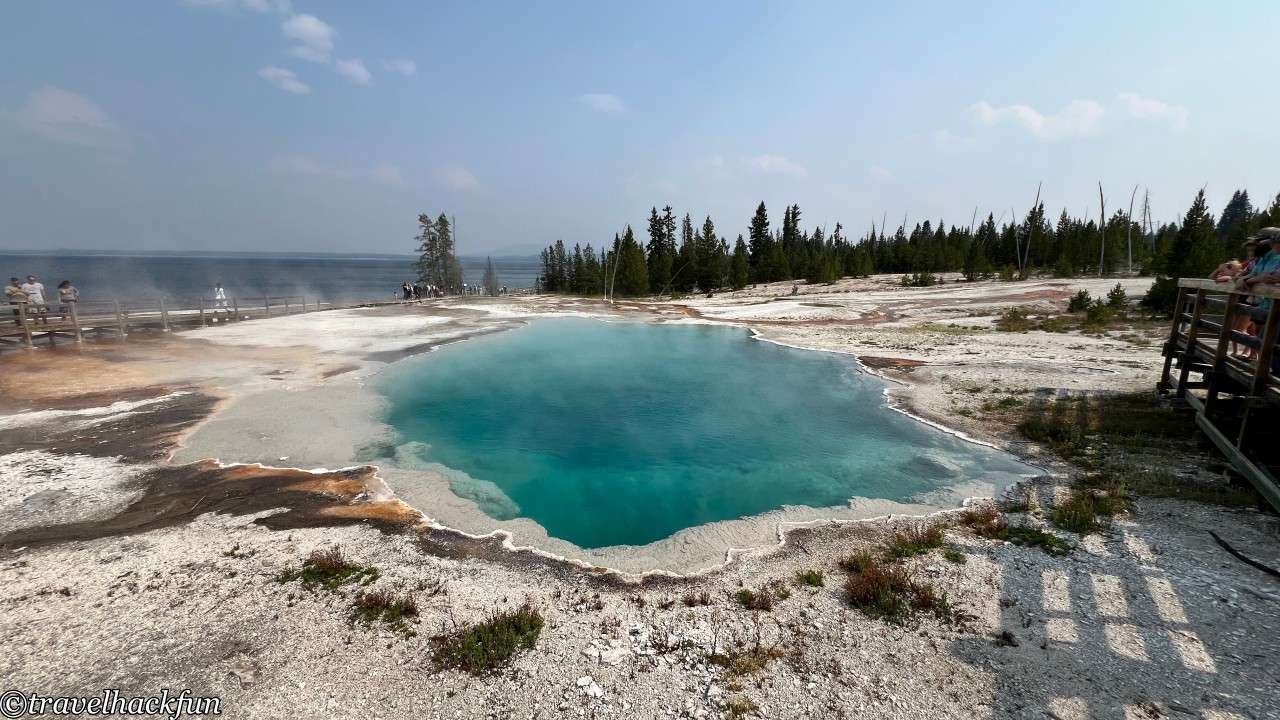
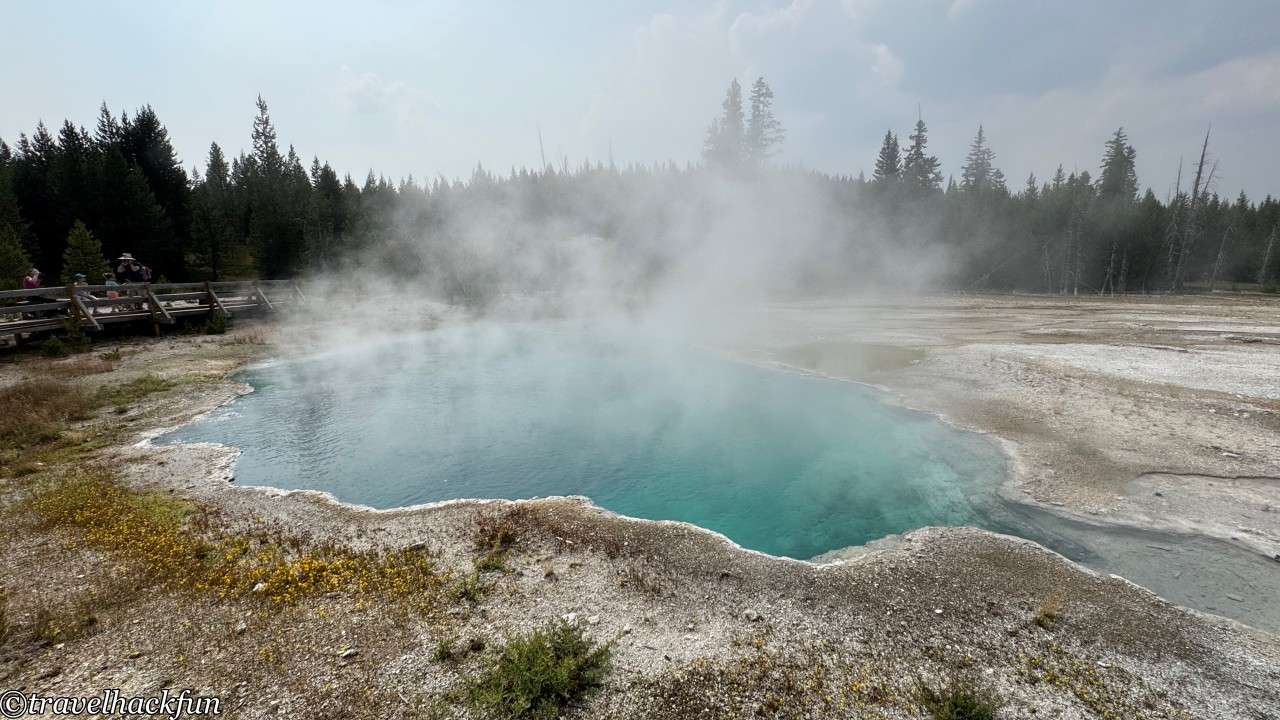






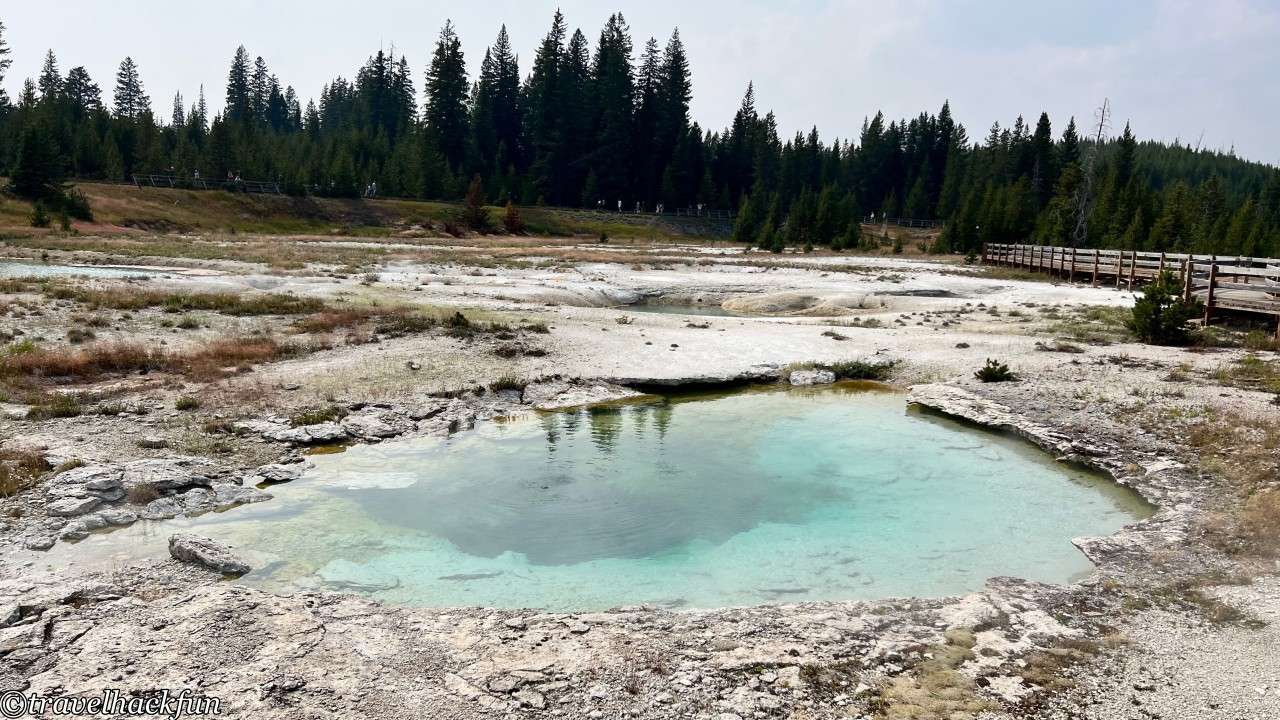
Must-see | Yellowstone Lake
Yellowstone Lake, located in the heart of Yellowstone National Park, is the largest high-altitude lake in North America. The lake’s vastness exudes a profound sense of tranquility, often resting quietly in view as you journey along the road. Occasionally, flocks of waterfowl fly over, and gentle waves ripple across its surface. At times, steam from nearby hot springs rises along the shore, like the lake's subtle breath, reminding visitors of nature’s power and beauty.
Around midday, you can stop by a lakeside picnic area or near one of the hotels to enjoy the lake’s beauty. The lakefront is perfect for a stroll or a picnic, and the park also offers various water activities, including fishing, boating, and kayaking.

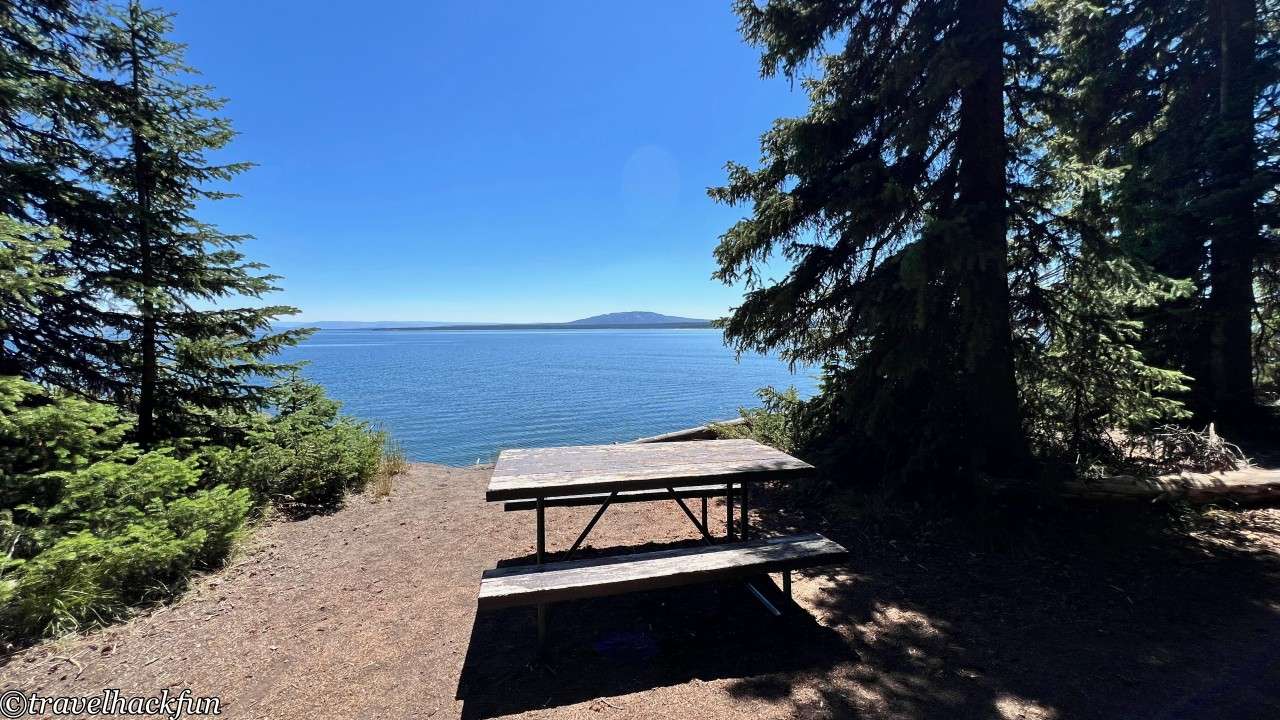
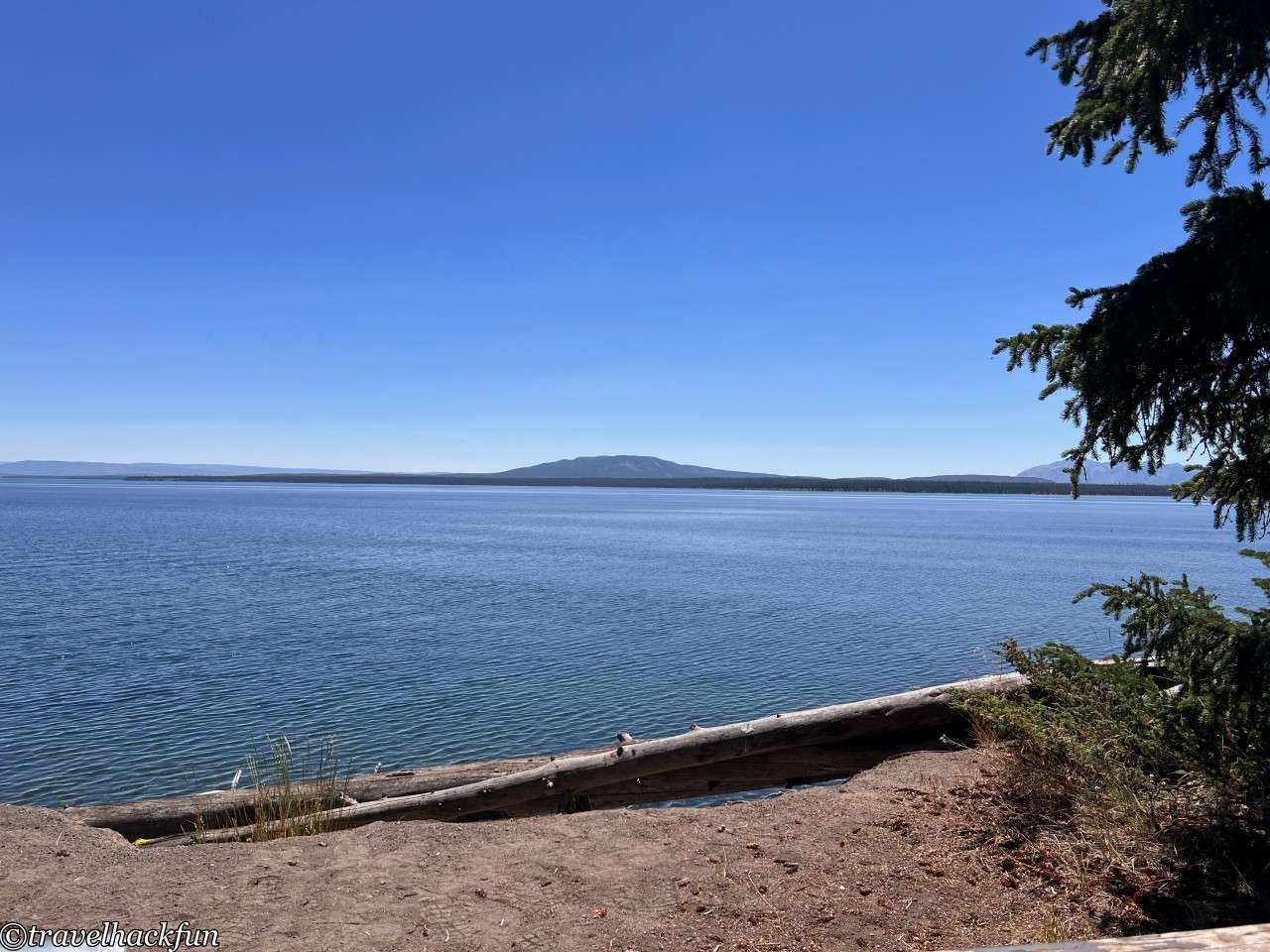
Must-see | Mud Volcano
In the afternoon, head north to Mud Volcano, a geothermal wonder starkly different from the calm of Yellowstone Lake. Mud Volcano has both a large and small loop trail, offering easy-to-navigate routes. The shorter 0.3-mile loop circles the main mud pools, while the larger 0.6-mile loop includes uphill sections but remains accessible for all ages. Both paths are on boardwalks, making for a comfortable walk.

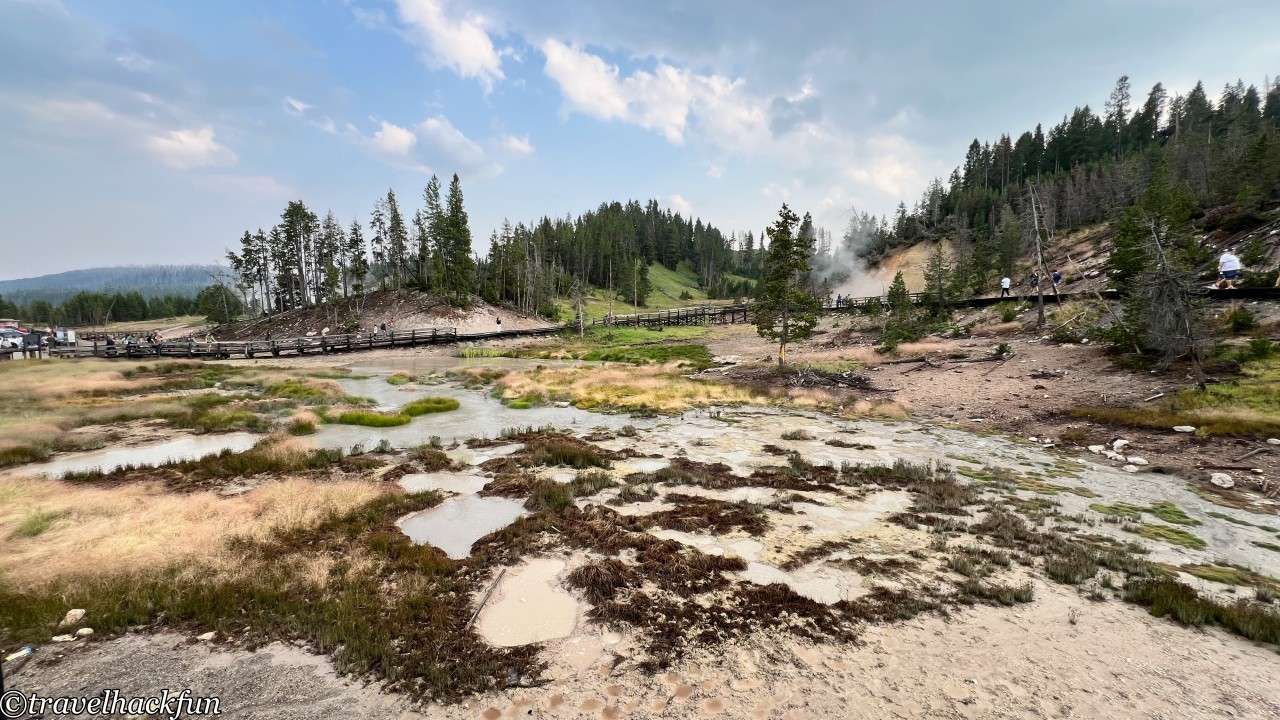
Starting on the small loop, visitors are often captivated by Dragon’s Mouth Spring, a roaring spring whose gushing water sounds like waves crashing, as if whispering from deep within the earth. The strong sulfur smell and bubbling mud make it feel like an otherworldly experience.
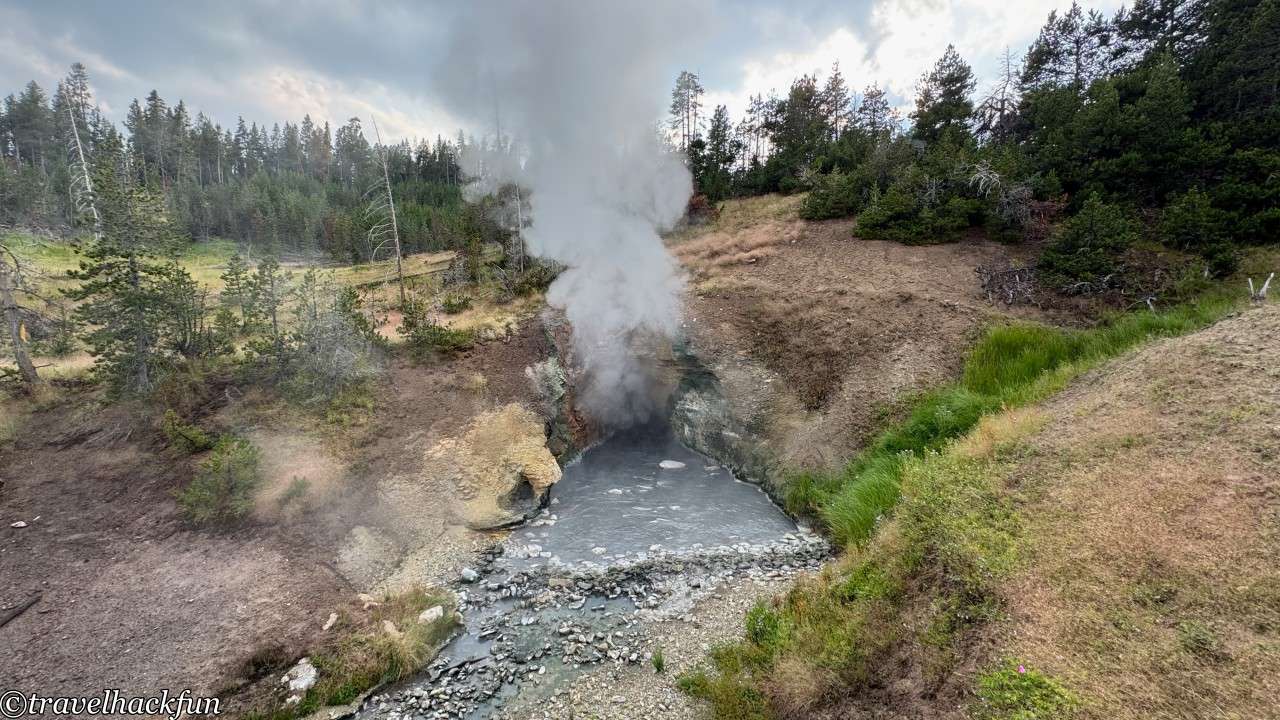
Mud Volcano itself is the main attraction. Originally a geyser, it evolved into a boiling mud pool over time. The thick mud bubbles up, emitting a potent sulfur scent and a constant gurgling sound.
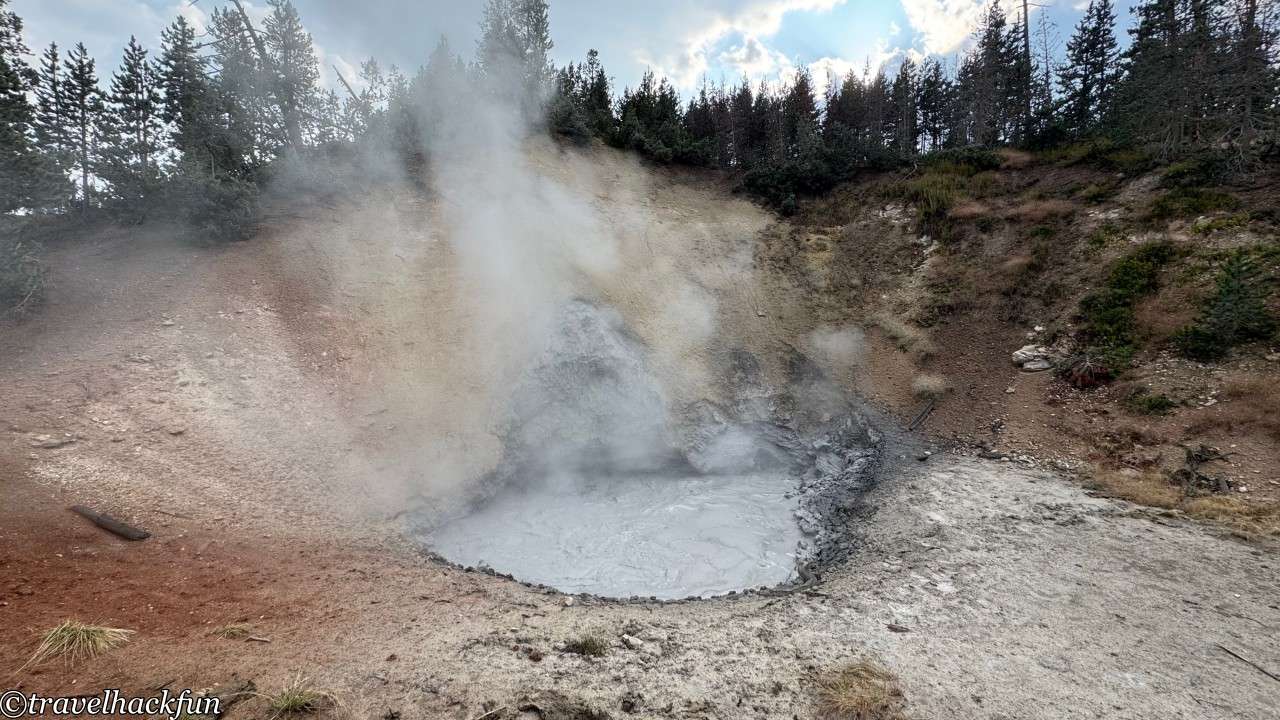
On the large loop, ascend to higher points where you can survey the whole area. The deep brown mud pools and intense sulfur smell make this area look like a natural power plant.
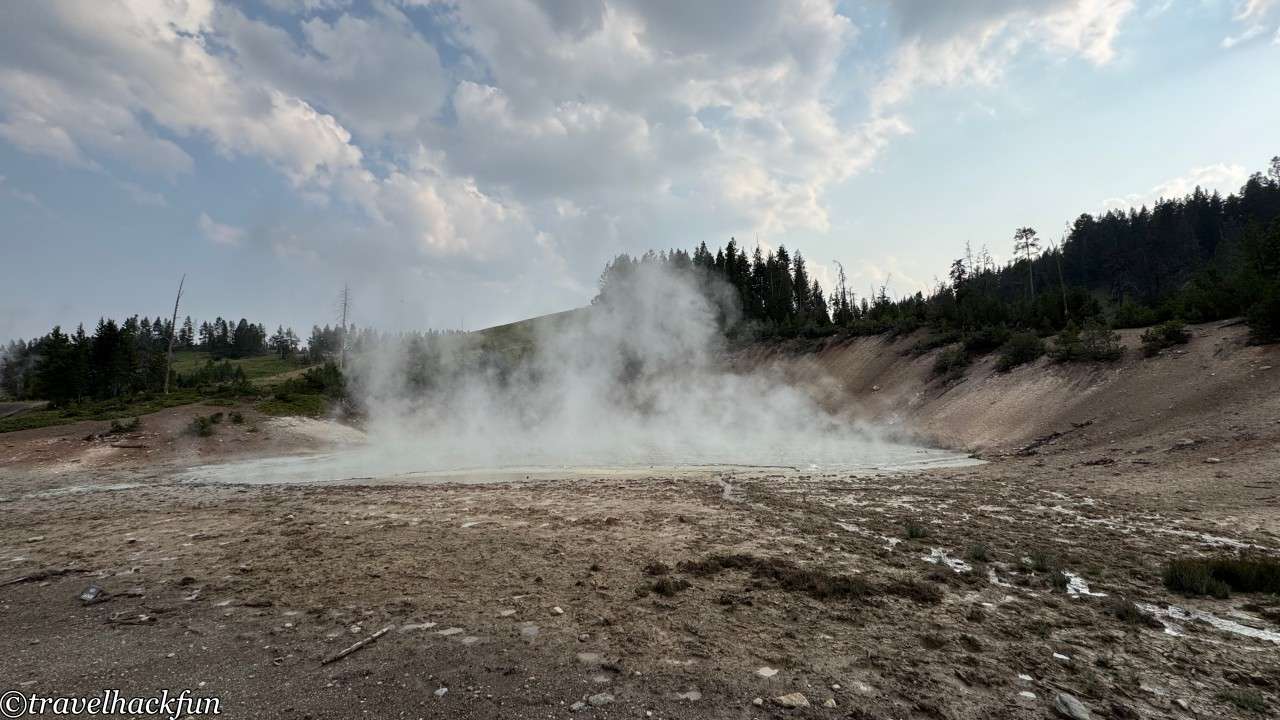
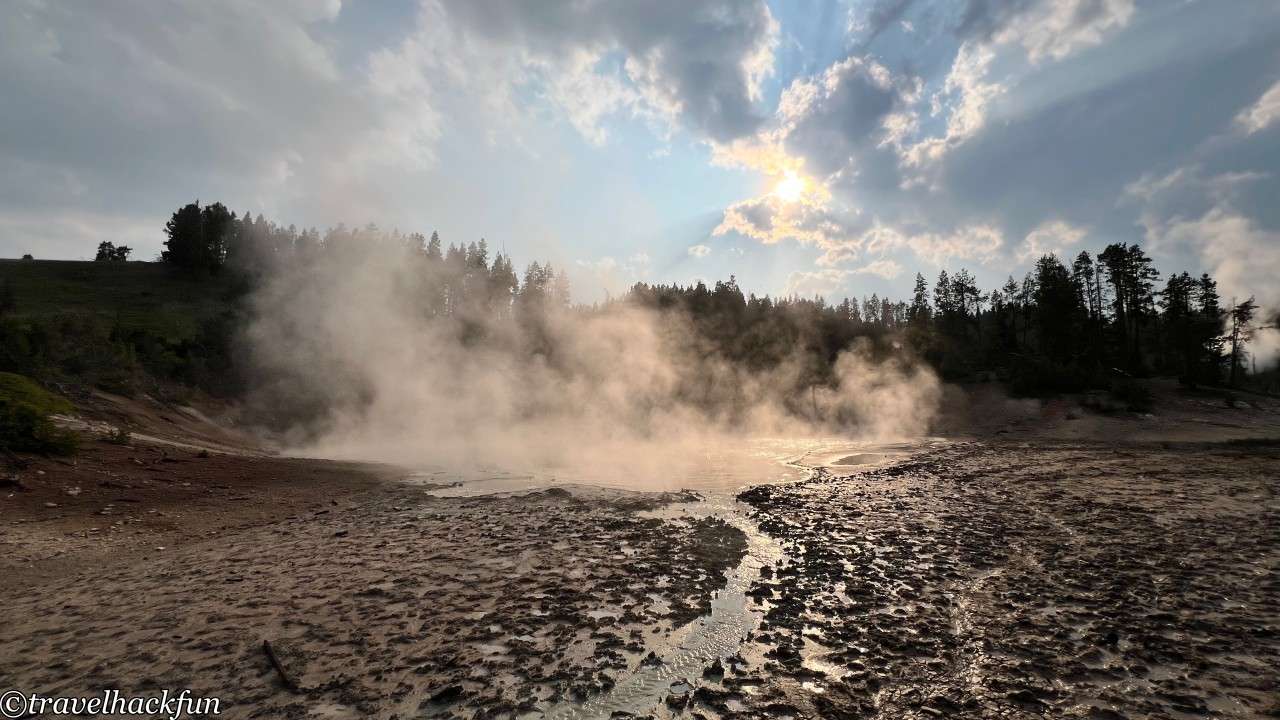
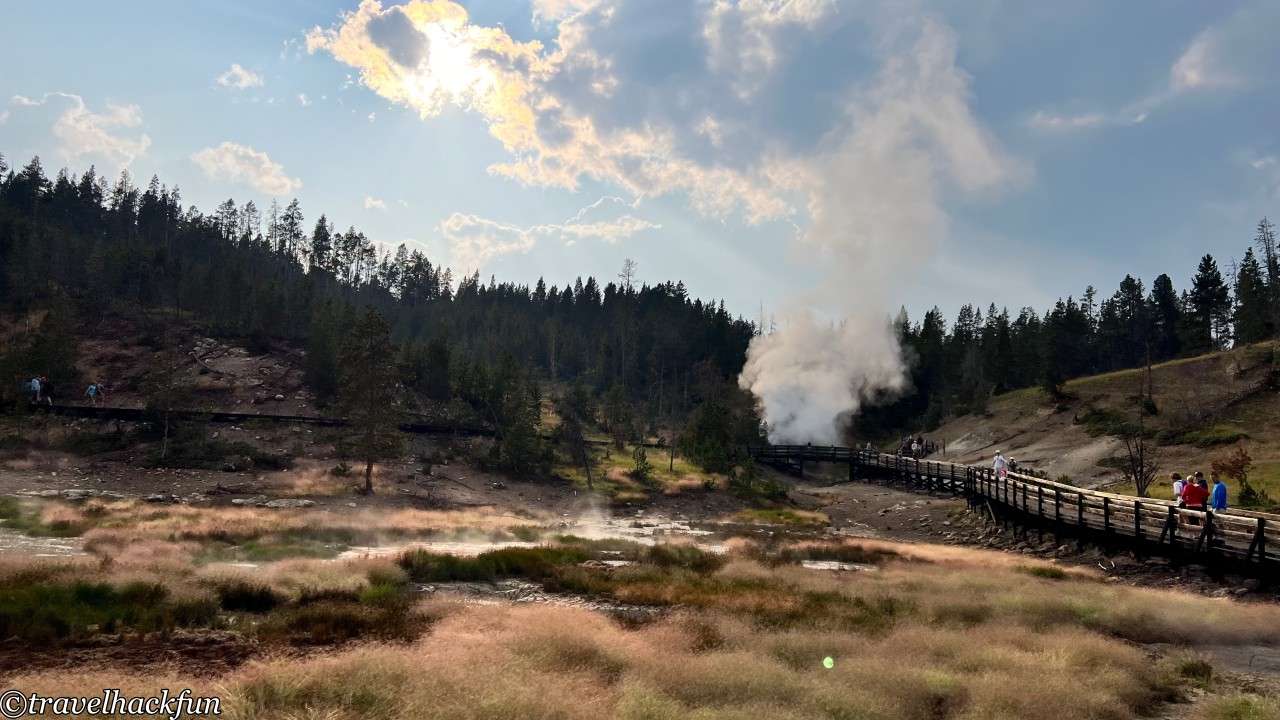
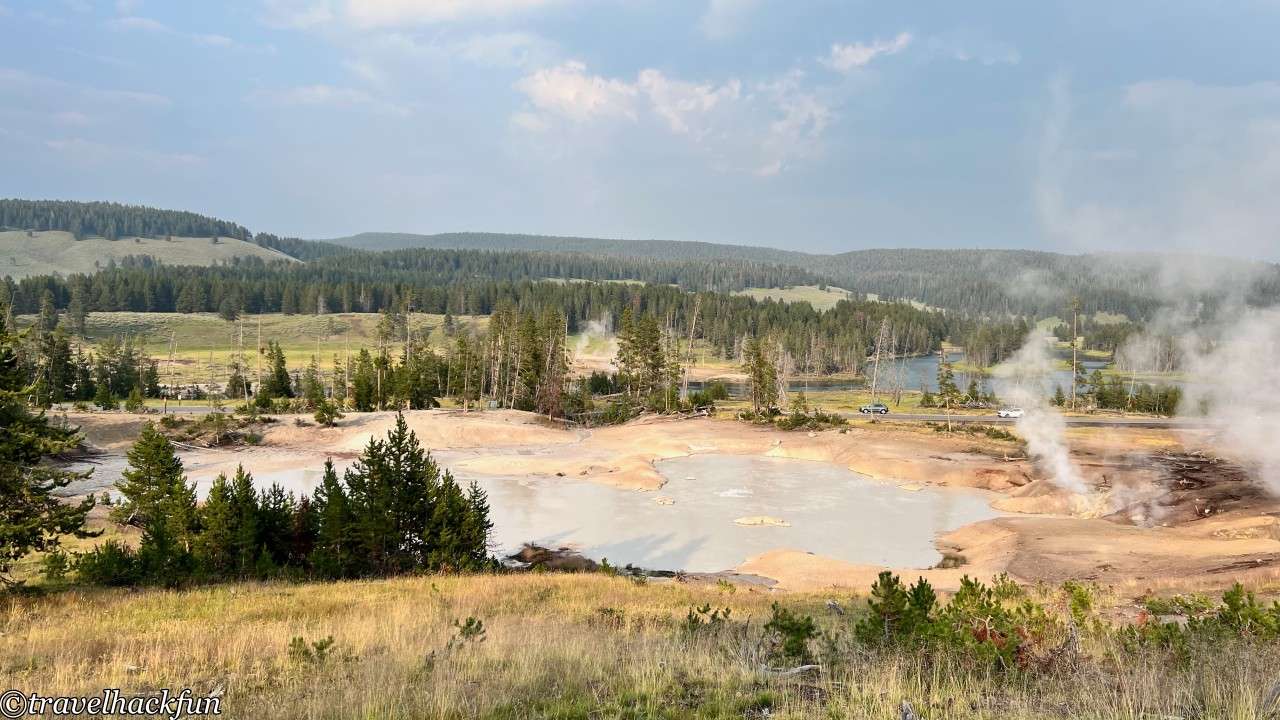
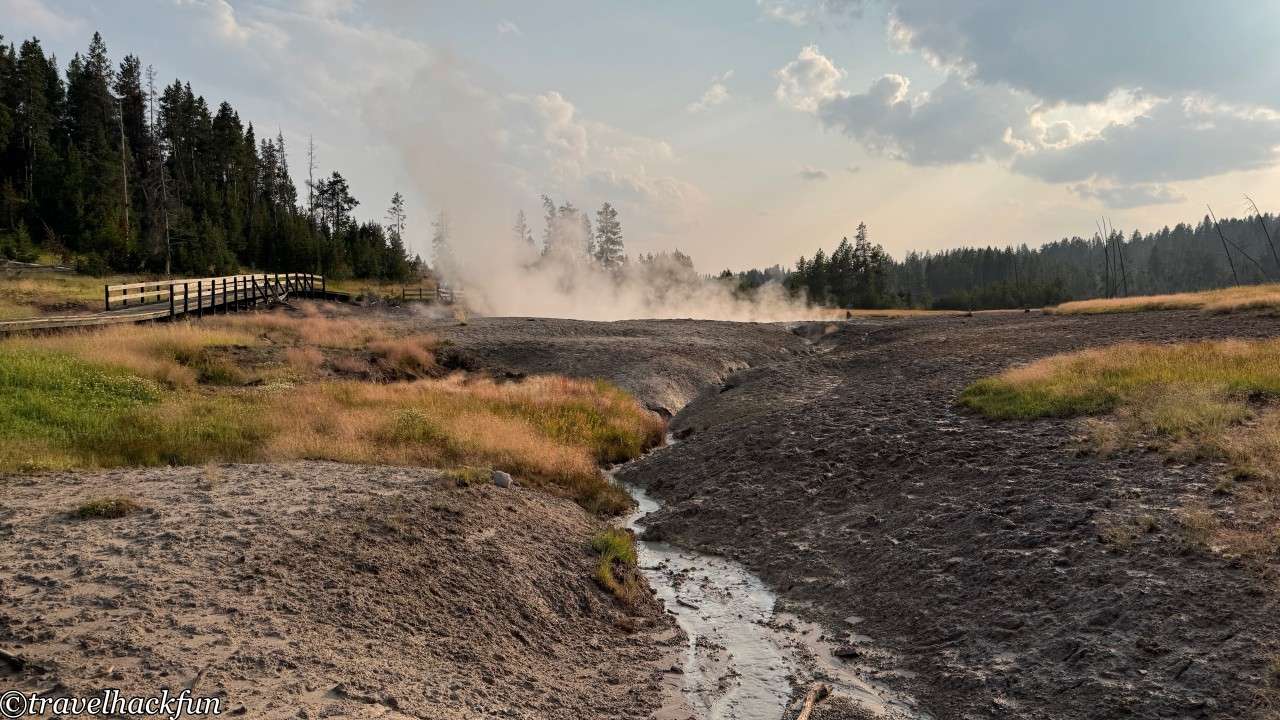
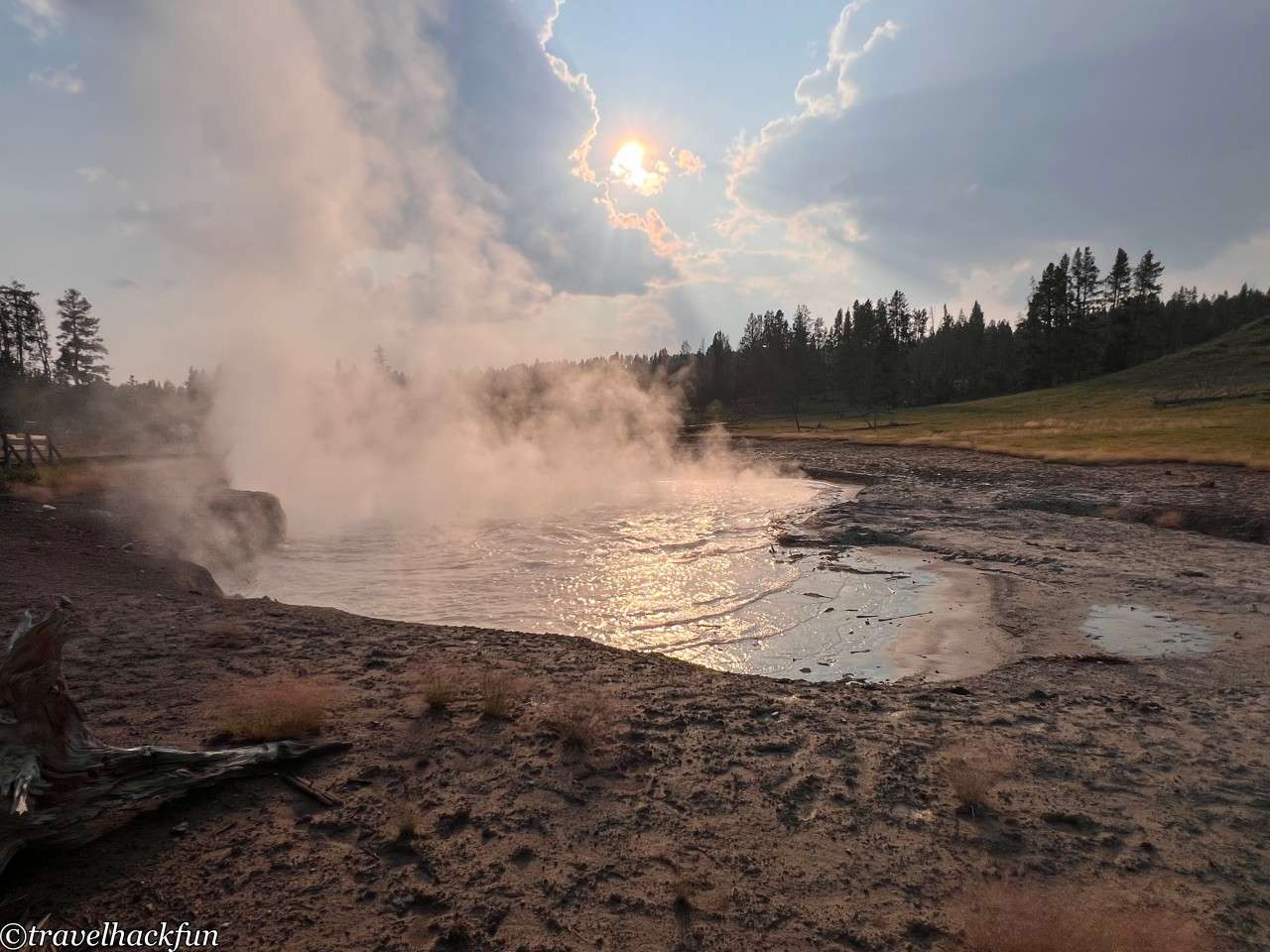
Black Dragon’s Caldron, a black boiling mud pool that began to show activity in 1948, is especially striking, with a unique color and heavy volcanic texture.
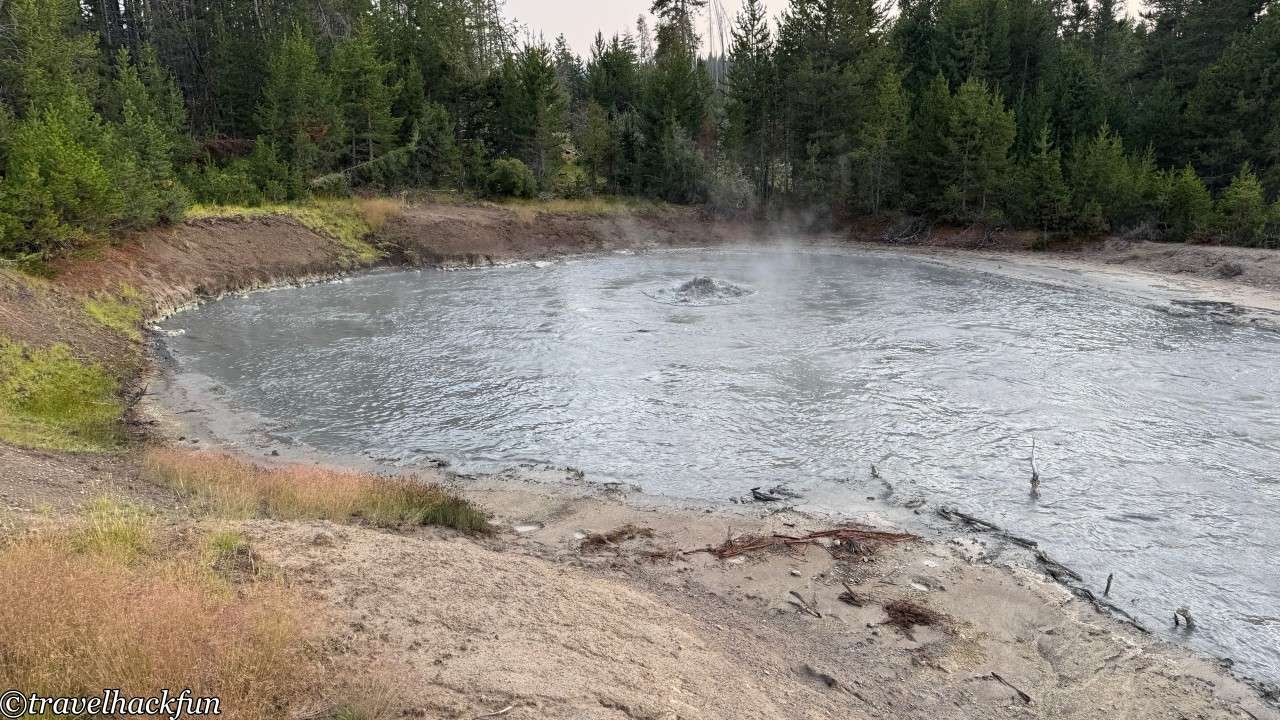
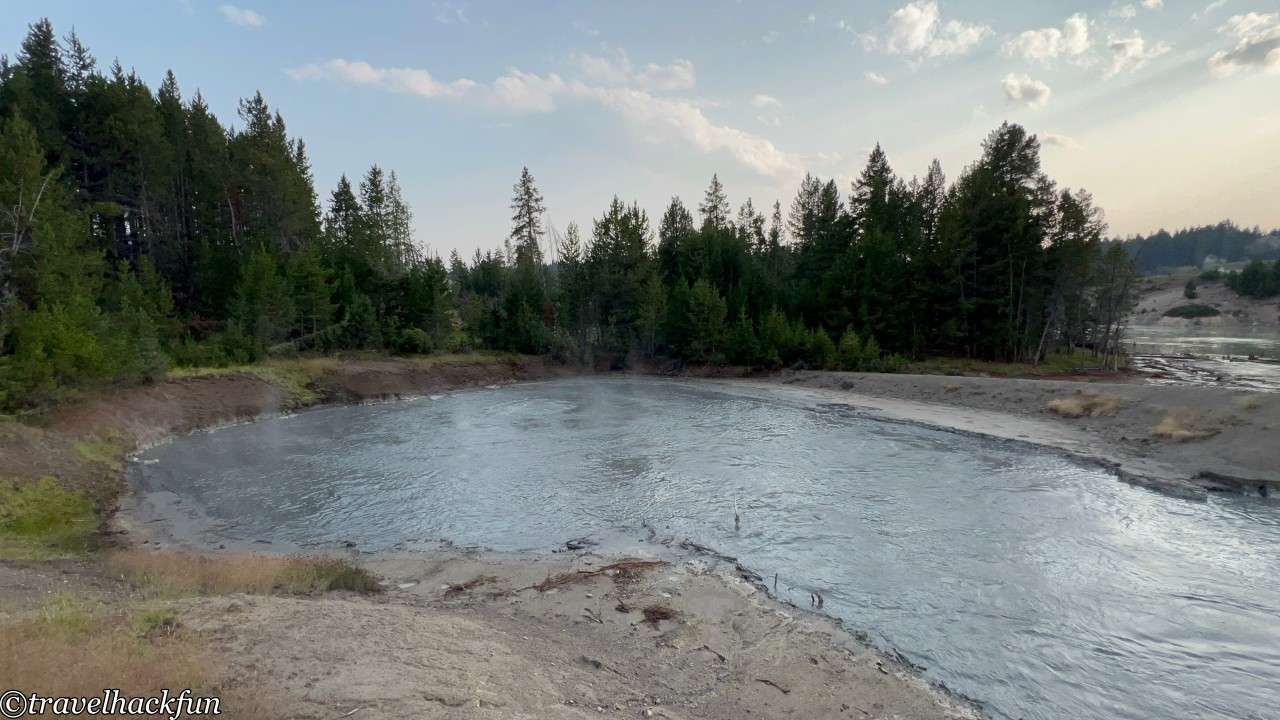
Nearby is Sour Lake, named for its high acidity. The lake’s surface is dotted with yellow sulfur deposits, and its water is a strange green-gray. This lake, like the surrounding mud pools and geysers, draws from the same geothermal sources, with occasional gas bubbles surfacing.
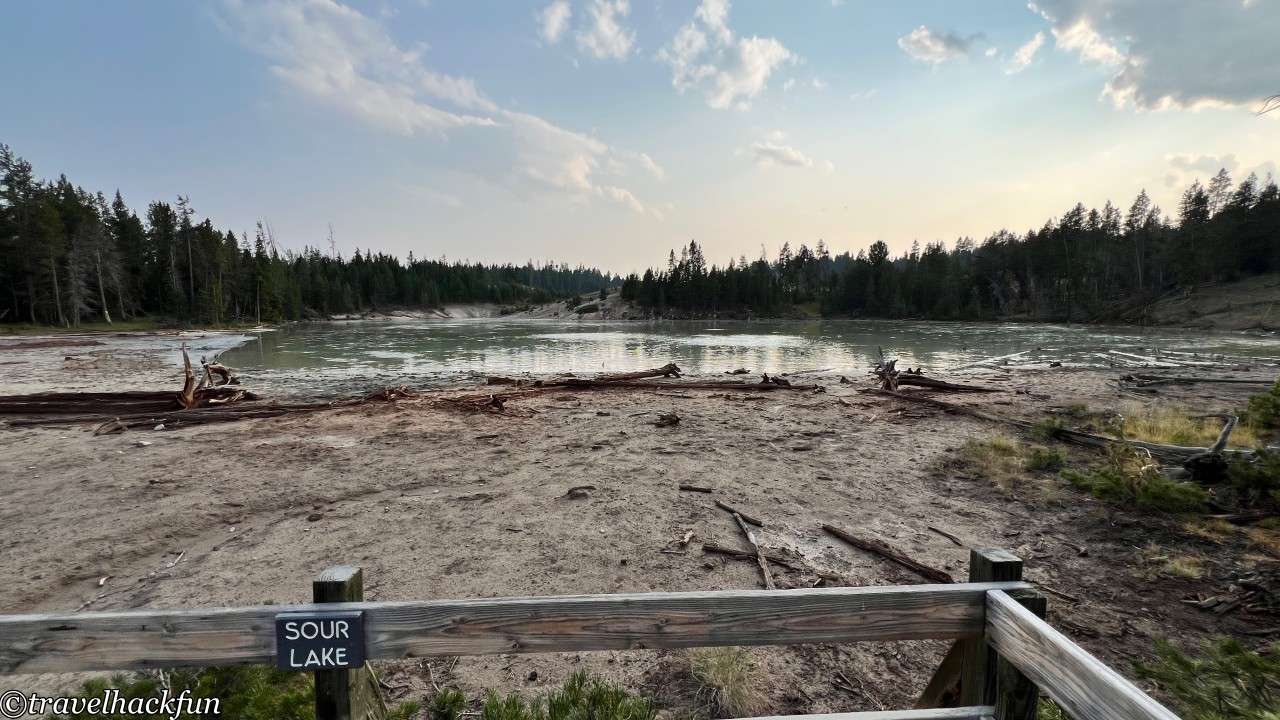
At the edge of the large loop is Grizzly Fumarole, a small but active geothermal vent emitting steam and bubbles, with a sound reminiscent of a bear’s growl.
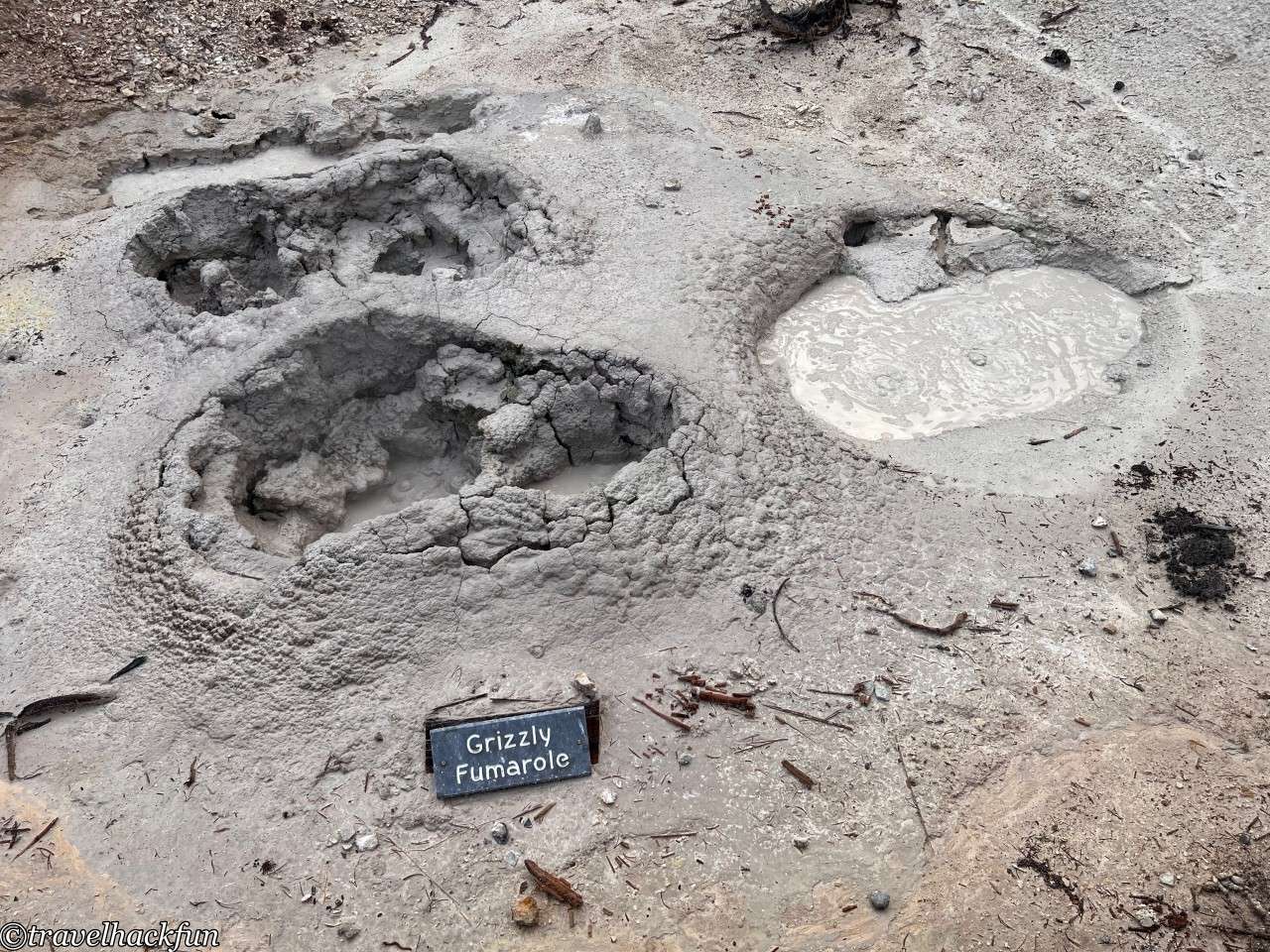
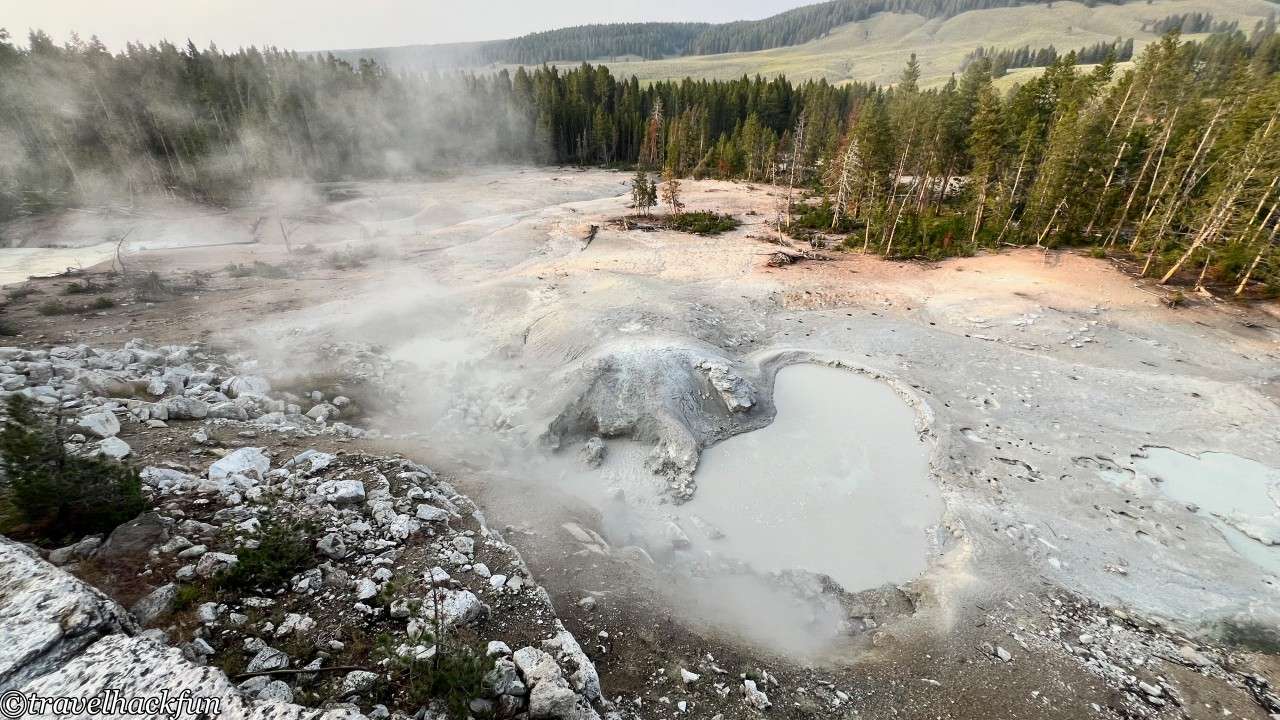
Must-See | Sulphur Caldron
Not far from Mud Volcano, Sulphur Caldron is one of Yellowstone’s most acidic and corrosive geothermal pools. With a pH between 1 and 2, this pool resembles sulfuric acid, and its boiling water continuously emits bubbles. The surface is covered in a thin layer of white smoke. Due to the high concentration of hydrogen sulfide gas, avoid deep breaths here, especially on calm days.
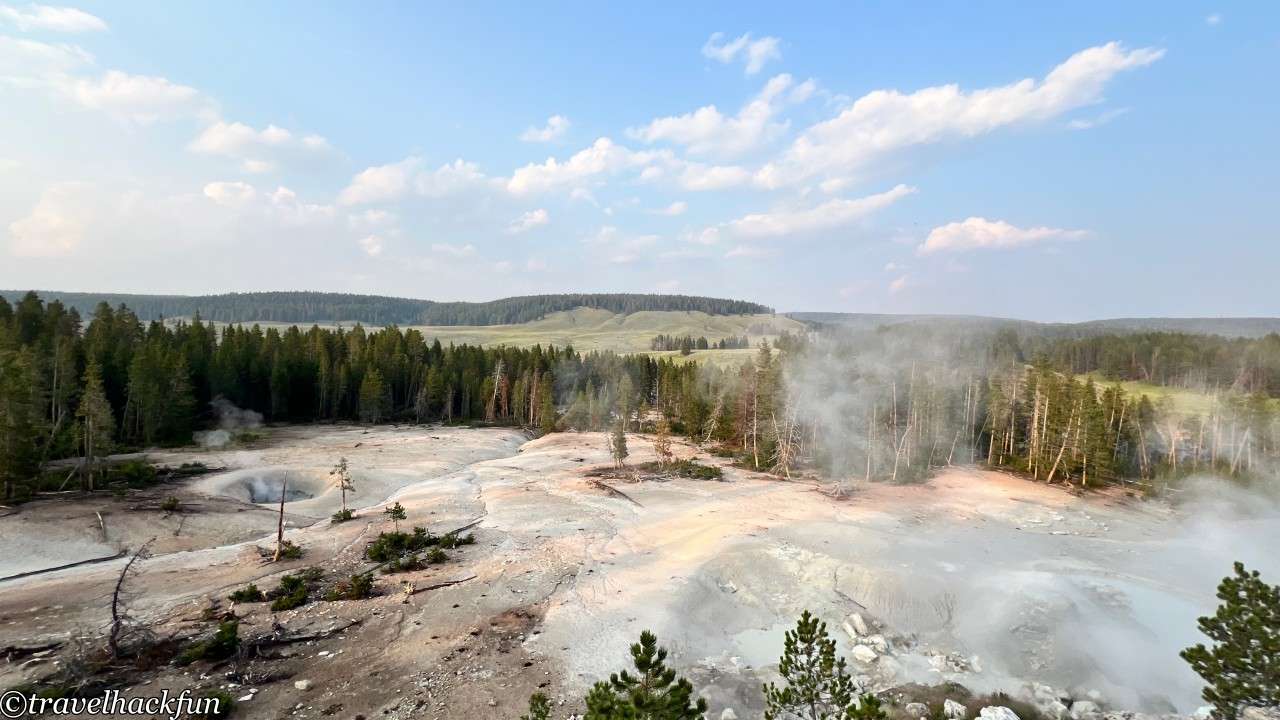
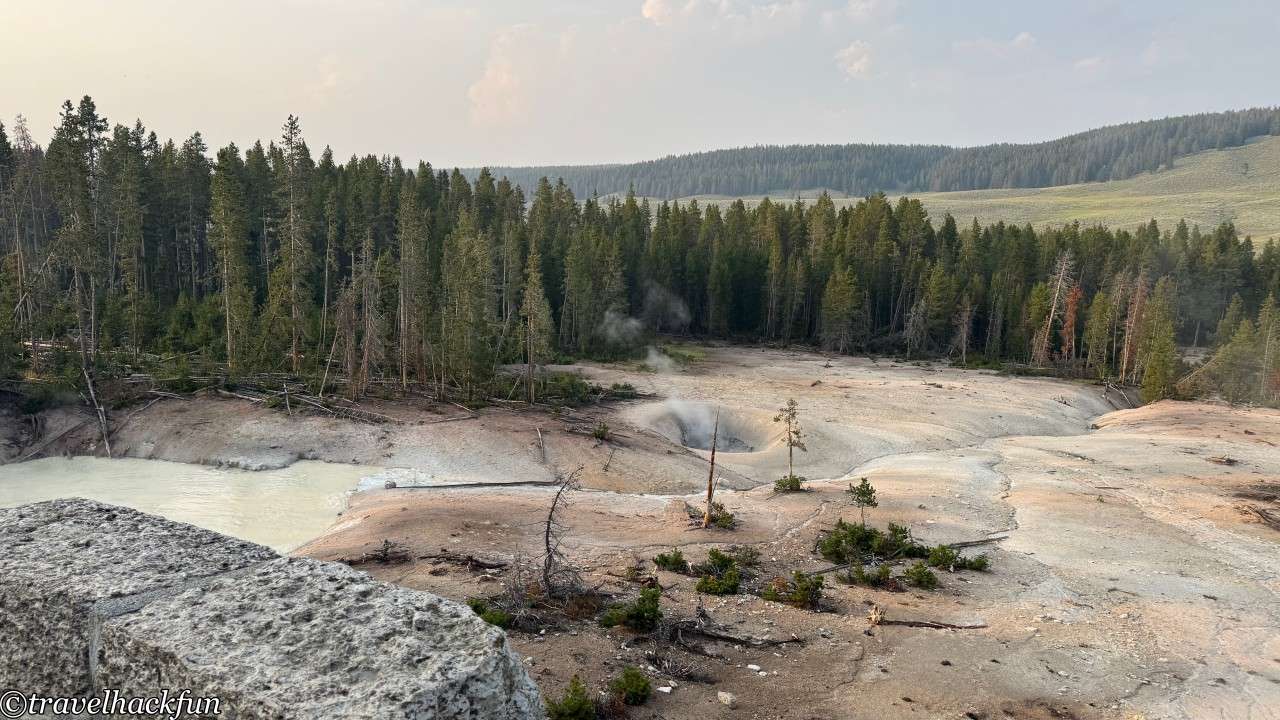
Lehardy Rapids
Heading north from Mud Volcano, you’ll soon reach Lehardy Rapids on the Yellowstone River. Though not widely known, these rapids feature powerful currents and rich ecology. From late spring to summer, this area is a crucial migration route for trout, who jump up the rapids to spawn. With some luck, you may witness trout leaping out of the water as they navigate the challenging currents.
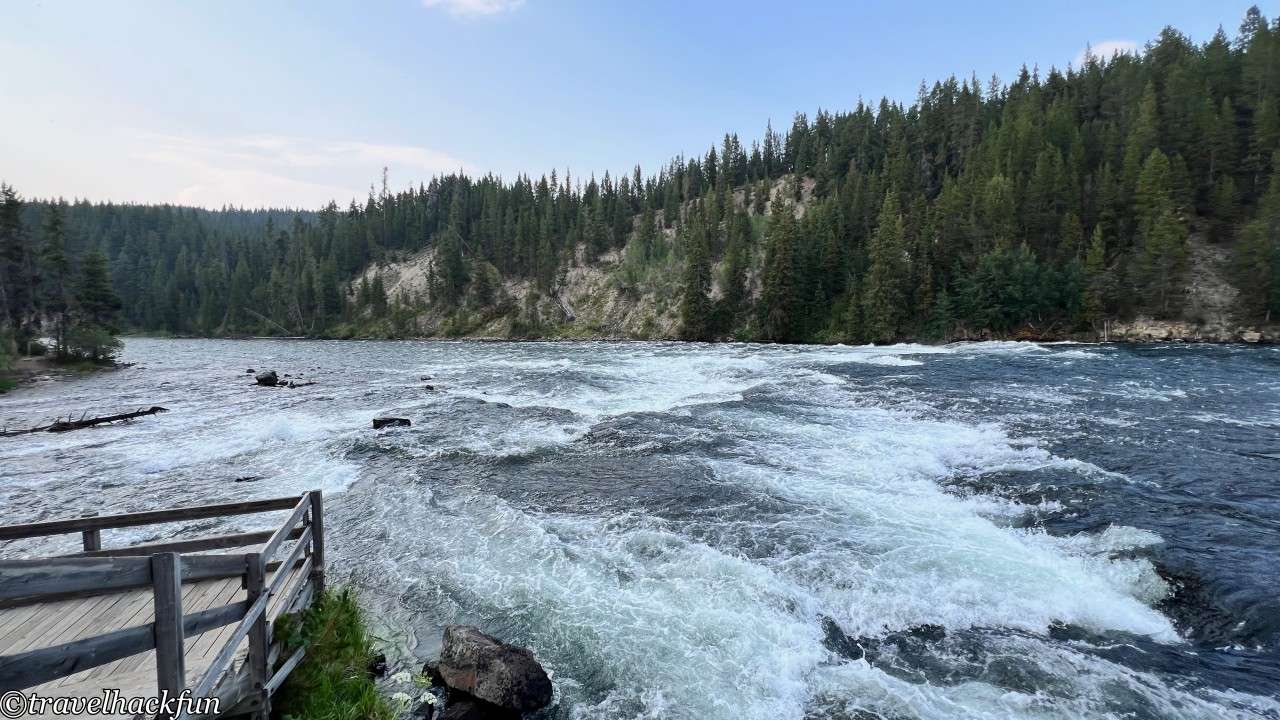

☕ Enjoying my travel notes?
You can Buy me a coffee to support what I do 🙌
Further reading
- More Yellowstone National Park posts